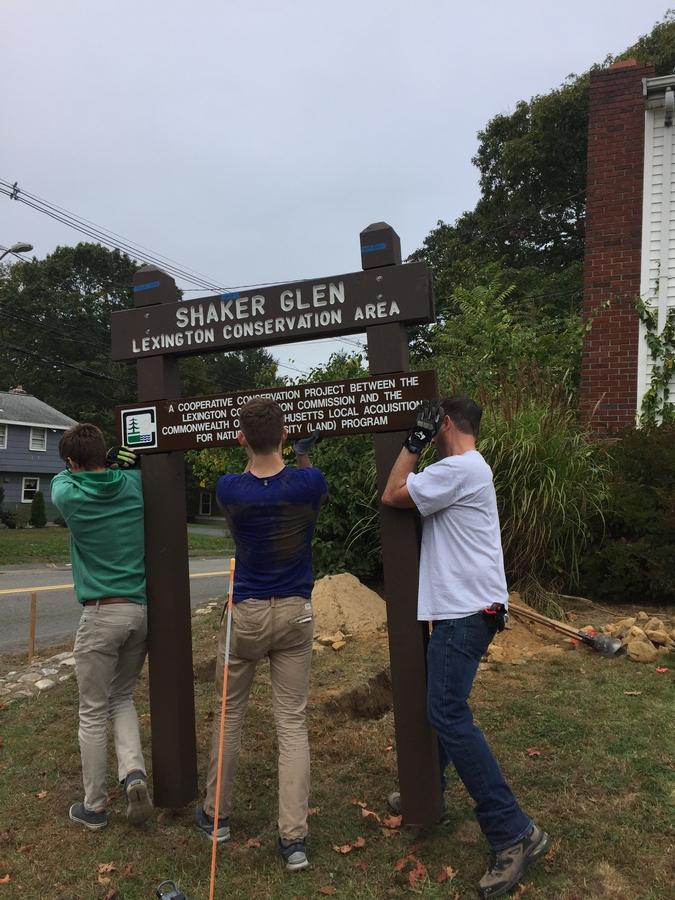
Yesterday morning, I happened to take a different route to work and noticed a sign along the road (courtesy, it turns out, of Lexington’s Eagle Scouts) for Shaker Glen. This wasn’t just a fanciful developer’s name for the subdivision that’s there; it turns out there was, briefly, a significant Shaker presence in the Lexington area.
First, the subdivision. Peacock Farm was a postwar modernist subdivision, designed by Walter Pierce, that’s literally right down the road from my house. It turns out that the developers of Peacock Farm, Edward Green and Harmon White, replicated the Peacock Farm design in a couple other areas around Lexington, including at Shaker Glen. But why did it get that name?
Seems the area came by the name honestly. From the Lexington historic survey site:
The name Shaker Glen refers to part of the hemlock-lined glen which extends into neighboring Woburn. In the late 1700s Ann Lee, founder of the Shakers, settled temporarily at the Kendall Farm in Woburn, which included part of the glen. Nathan and Sarah Kendall were converted to the Shaker faith in 1781. But local residents were suspicious of the Shakers and the Kendalls sold the farm and left Woburn while Mother Ann Lee went on to establish a utopian religious community in Harvard, Massachusetts in 1791.
So not only is Shaker Glen named for a real Shaker settlement, it’s named because the founder of the Shaker faith lived there. Who says history is boring?
